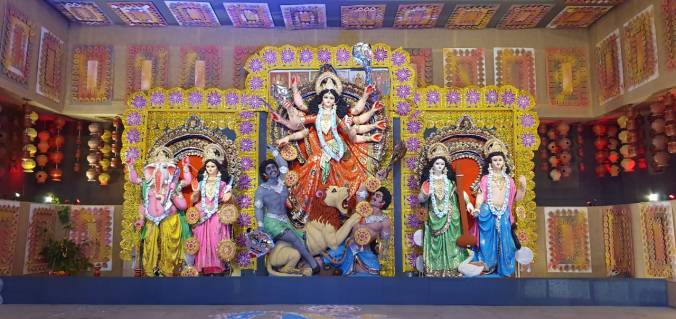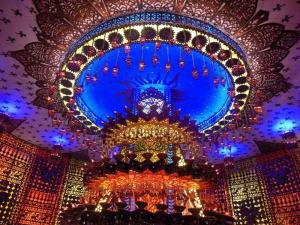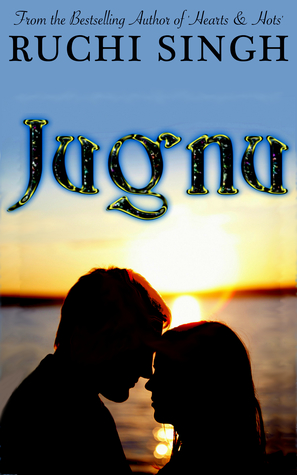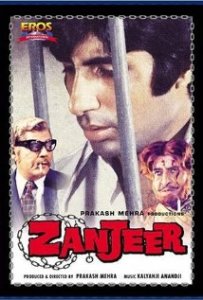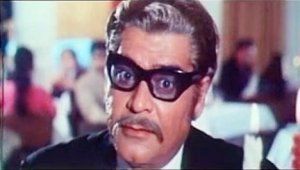It’s interesting how the number Nine has a significance in cultures and religions across the world. It is a magic number, a number of completion and fulfilment. It invokes fear and deference at the same time.
In Chinese culture ‘Nine’ is a sacred number because it rhymes with their word for long lasting.
In ancient Egypt ‘Ennead’ represents the nine all-powerful Egyptian deities, who proclaimed Horus to be the inheritor of Egypt.
In Norse mythology the universe is divided into nine worlds, which are all connected by the world tree Yggdrasil.
The Azetcs believe that their underworld, Mictian consists of nine levels.
The Mayan step pyramind, El Castillo in Chichen Itza consists of 9 steps that lead to their underworld Xibalba.
In Hinduism too ‘nine’ is number of the universe encompassing Earth, Water, Air, Fire, Ether, Time, Space, Soul and Mind. The Goddess, therefore, takes on different avatars to personify the nine elements of the universe. The month of Aashwin marks the nine most auspicious days in the Hindu lunar calendar, when the Goddess takes various forms to vanquish evil and let good reign in our land, hearts and minds. These nine days are called Navaratri.
Day 1 of Navratri the Goddess takes the form of Shilaputri, Lord Shiva’s companion. She is formed from the collective power of Brahma the creator, Vishnu the preserver and Shiva the destroyer. As Shilaputri she symbolizes the spiritual awakening or the awakening of the ‘Soul’
Day 2 she takes the form of Brahmacharini, which is all about bliss and happiness. It is believed that the Bramhacharini has done penance for a thousand years to acquire Lord Shiva’s love and affection. This avatar signifies determination and a strong ‘Mind’.
Day 3 she manifests into Chandrakhanda, the ferocious ten armed Goddess who is carrying a weapon in each arm. She can be benevolent and fierce at the same time showing the vicissitudes of the ‘Heart’.
Day 4 is about the Goddess Kushmanda who creates the universe with her laughter. She rides on the lion and shows courage at the face of adversity. In this avatar she denotes mother ‘Earth’ who stands tall undeterred during all calamities and disasters.
Day 5 or on panchami the Goddess Skandamata is worshipped. Skandamata denotes mother of Kartekeya, she rides on the tiger and carries a baby in one hand. In this avatar she depicts the ‘Time tested’ ‘Timeless’ bond between the mother and the son.
Day 6 of the Navratri celebrates goddess Katyayani. The goddess was born to the great sage, Kata, as an avatar of Durga. Dressed in orange, she exhibits immense courage. Dressed in orange she symbolizes ‘Fire’.
Day 7 of the festivities is dedicated to Kalratri. The Goddess manifests into the most fierce form of Durga. Dishevelled hair and dark complexioned, the avatar is dressed in white to show peace and prayer. In this avatar she represents the all pervading ‘Air’ and ushers in peace amongst all creatures.
Day 8 celebrates goddess Gauri. She in this form is the epitome of calm and tranquillity signifying ‘Water’.
Day 9 celebrates goddess Siddhidatri. The goddess is known for having supernatural healing powers. The goddess represents blissful state of mind, just like the sky or ‘Ether’ on a clear day.
The universe is spattered with signs and symbols of how we are all one and our consciousness arise from the same plane. Yet, here we are trying to prove who is mightier than the other. May the occasion of Durga Pujo enable us to open our minds and welcome thought processes and opinions of all cultures and religions. May the propitious time help us see that we are all a tiny part of the same universe and have a shared goal to further Humanity.


